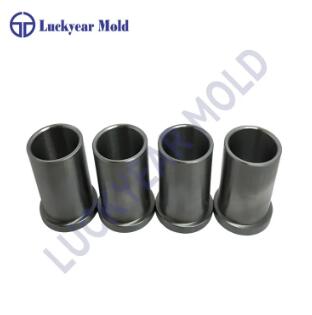Common Challenges in Manufacturing Press Die Mold Components
2024-07-25
Introduction
Press die mold components are essential in various industries, including automotive, electronics, and household appliances. They play a crucial role in shaping and forming materials, making the manufacturing process highly efficient. However, creating these components is not without its challenges. In this blog, we will explore some common difficulties faced during the manufacturing of press die mold components and discuss potential solutions.
Material Selection
One of the primary challenges in manufacturing press die mold components is selecting the appropriate material. The material must possess high wear resistance, toughness, and the ability to withstand high temperatures and pressures. Common materials include tool steels, carbide, and various alloys. However, each material comes with its own set of properties and limitations.
Solution: To address this challenge, manufacturers often conduct thorough material analysis and testing. Advanced simulation tools and material databases can help predict how a material will perform under specific conditions. Collaborating with material scientists and engineers can also lead to better material selection.
Precision and Accuracy
Achieving high precision and accuracy is crucial in the manufacturing of press die mold components. Even minor deviations can lead to defects in the final product, affecting its quality and performance. Precision is particularly challenging when dealing with complex geometries and intricate designs.
Solution: Utilizing advanced CNC machining and EDM (Electrical Discharge Machining) techniques can significantly enhance precision. Regular calibration of machines and employing high-quality measuring instruments can also ensure that components meet the required specifications. Additionally, implementing strict quality control measures at each stage of the manufacturing process helps in maintaining accuracy.
Wear and Tear
Press die mold components are subjected to high levels of stress and repetitive use, leading to wear and tear over time. This can result in decreased efficiency, higher maintenance costs, and a shorter lifespan of the components.
Solution: Applying surface treatments and coatings, such as nitriding, PVD (Physical Vapor Deposition), or CVD (Chemical Vapor Deposition), can enhance the wear resistance of the components. Regular maintenance schedules and employing predictive maintenance techniques can also help in identifying wear early and extending the life of the components.
Heat Treatment
Heat treatment is a critical process in manufacturing press die mold components to achieve the desired hardness and mechanical properties. However, improper heat treatment can lead to issues such as distortion, cracking, or inadequate hardness, compromising the component's performance.
Solution: Ensuring precise control of heat treatment parameters, such as temperature, duration, and cooling rate, is essential. Utilizing advanced heat treatment furnaces and monitoring systems can help achieve consistent and reliable results. Additionally, conducting thorough testing and inspections post-heat treatment ensures the components meet the required standards.
Cost Management
Manufacturing press die mold components can be expensive due to the cost of materials, advanced machinery, and skilled labor. Balancing cost management while maintaining quality and precision is a significant challenge for manufacturers.
Solution: Adopting lean manufacturing principles and optimizing production processes can help reduce costs. Investing in automation and advanced manufacturing technologies can improve efficiency and reduce labor costs. Additionally, sourcing materials and components from reliable suppliers at competitive prices can also contribute to cost management.
Conclusion
Manufacturing press die mold components involves navigating several challenges, from material selection and precision to wear and heat treatment. By leveraging advanced technologies, implementing strict quality control measures, and adopting cost-effective strategies, manufacturers can overcome these challenges and produce high-quality components that meet industry standards. Continuous improvement and innovation in manufacturing processes will further enhance the production of press die mold components in the future.



